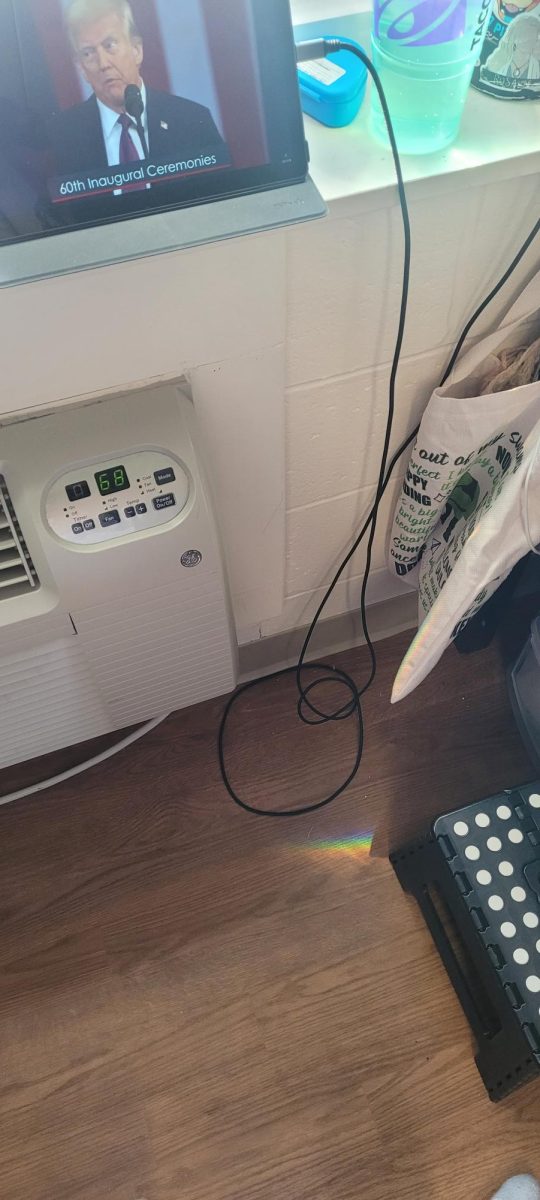
Contributor
As a child, I was deeply unsettled by the idea of dolls that knew they were dolls—living fabric or plastic toys, which bled stuffing and visited seamstresses at their hospitals. I hated the comparisons, because weren’t the stakes so much higher? Like Toy Story, where a smudge of marker or rip of seam was both damning and permanent. Material could never heal, not really. Even more than that, the most carefully kept object wears with use. In interacting with a thing we love, we also bring its degradation that much closer. A haunting permanence to the impermanence of living objects. Have you ever tried to bend a paperclip twice? Tried to revise the change you made, only to have the wire come apart silently in your hand? Do you remember how sharp it was? The guilt of having wasted a perfectly good thing?
Like many kids, instead of just finding something creepy and leaving it alone, my fear of permanence wound its way throughout my life. At church camp, I was known for running through thorny bushes during capture the flag until my legs were destroyed. I loved it. I loved the burn in the shower as I cleaned the surface-level wounds. I loved the attention it brought me. I loved wearing jeans so no one would know, and I loved that the denim up against the scars never let me forget. I loved the ombre of puckered maroon to inflamed red to delicate white of my skin. I loved scars, but more than that, I loved watching my body weave itself back together. In knowing that the me when I’m asleep puts back together the me I take apart when I’m awake. Like elves in fairytales, someone I cannot see will sew up the gashes I’ve made in myself. Scars are proof that I have lived and survived, and that is comforting.
Part of my experience being transgender has been a distance from my body. I would describe it now as that aching itch of worry, seeing the national debt rise. You know something’s wrong, but it’s too substantial and abstract to garner any real action, just that nagging in the back of your mind. You become so uncomfortable with discomfort that you try to escape the constant companion of yourself, and your body becomes an object of discomfort. As my body began to develop, I felt fragile, so fragile. Not that my parts would break like China, no, that would have been easier. They were thick, firm, but supple. They would bend and distort before they would break. No, I was most afraid of what held me together, the wiry tissue which connected all my heavy moving parts. Sometimes, I thought if I started screaming, I would never have stopped. But again, that’s not what scared me. I could see it clear as day, like falling on the stairs and all your teeth falling in, natural almost, I start screaming, and I scream until the delicate strips of sinew which form my vocal cords launch into my hand as a perfect chunk. It feels like a sore throat, and it all comes out, and I wheeze through it the whole time, not frightened, but not pleased either. Enjoying the space in my throat and the tender sensation I can’t put my fingers on left behind. If I started screaming, the vibrations would rip every fragile ligament in my body, and I would collapse like a pile of meat onto the floor, every piece just as alive as before, just an ineffective solitary agent, weeping on the ground.
On the 20th of December, I had my breasts removed. It would’ve cost 100,000 dollars without insurance. It’s hard to express how natural it feels. I remember back when I was small, back when I would run through the brambly bushes in Washington and feel the thorns on my legs. The pleasure of watching them heal over weeks and months. I remember before my nipples engorged and the grief froze my body to stone. I woke up shocked that I couldn’t feel the tissue they removed, that I had stayed one consciousness instead of following my abandoned breasts to whatever biohazard bag they now sat in. No, instead of lobbing off a part of me, it felt like carving through stone, chiseling away until I was found underneath. I wasn’t a whole thing split into three, I was one thing.
I love scars, they are proof of the impermanence of permanence. I look at the stretch marks on my thighs, pointing like northern lights to the shiny red ribbons which outline my pectorals. We took family photos this past summer, right after I booked my date with the surgeon. I knew, standing in the JCPenney, the exact date on which these photos would stop being me. A date. Isn’t that wild? Everyone changes, but I’m not sure everyone gets that unique finality, rarely do trans people, but in that moment, I understood that change is not the end. I was not a boy brought to life; I was alive. Every mark or scar adds to memory, not detracting from this fact. I am alive because, not despite, of myself. I still struggle connecting to my body, reminding myself that if I fall, I will not shatter. Mirrors reflect instead of reveal, like the handiwork which a surgeon revealed to me, and I continue, different but consistent, I can see the threads that string my disparate life together, and that is more than enough comfort for me.
Editor’s Note: If you or someone you know needs support, to be heard, or a community to hold you up – resources exist such as the Bentley Counseling Center at (781) 891-2274 or visit the Callahan Building, 2nd floor. For more information, visit the Bentley Counseling Center website: https://www.bentley.edu/university-life/student-health/counseling-center